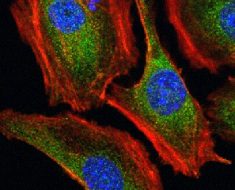It’s a well-known fact that sexual desire ebbs and flows throughout the life of a long-term relationship for a number of reasons. Questions like “What factors increase and decrease desire?” and “How can couples work through those factors?” have long been topics of interest for researchers and clinicians, but dozens of studies respond to those questions with different answers.
Research by University of Kentucky Associate Professor Kristen Mark brings decades of findings together to help researchers, clinicians and couples understand where the science stands in a new issue of the Journal of Sex Research.
First thing’s first: It’s okay to have low or changing desire, and it doesn’t mean your relationship is headed toward a dead end.
“Maintaining desire is complicated and multidimensional, but low desire is not necessarily indicative of relationship issues,” said Mark, director of the Sexual Health Promotion Lab and faculty member in the UK College of Education’s Department of Kinesiology and Health Promotion.
If relationship issues aren’t causing the drop in desire, what is the cause? Mark and doctoral student Julie Lasslo identified several nonclinical factors in their study and how couples can work past them:
Gendered Expectations
Gender differences are often assumed, with expectations placed on men to always be ready for sex and expectations placed on women to be the gatekeepers of sex. “Women may express having less desire than men, but often that’s because women are not taught to pursue sex or that sexual desire and pleasure should be important to them,” Mark said. “Alternately, men are expected to be the pursuers of sex and to always be ready and willing. When they don’t fit that stereotype, it can be particularly difficult to address within the relationship.” Those expectations are played out across society, especially in pop culture, and can create issues for long-term relationships. What can couples do? Communicate with each other and acknowledge that these societal factors exist and may be contributing to the difficulty around desire—some may be entirely unaware of the influence of societal expectations.
Self-expansion is another important factor. When two individuals try to become one—how many think of a long-term relationship—”that’s a desire killer,” Mark said. It’s important to maintain a level of autonomy, where each individual focuses on expanding themselves, to have space for desire to grow. “Sexual desire is like fire, and fire needs air,” Mark said. “By becoming completely enmeshed with a partner, abandoning all autonomy, the excitement of the unknown is entirely removed from the relationship; and this can be problematic for maintaining sexual desire.”
In fact, individual sexual desire fluctuates over time, no matter what the relationship is like. Sexual desire is not a stable trait, “and if individuals and couples anticipate the fluctuation, there will be much less of a negative impact,” Mark said. For example, desire may decrease when someone experiences a job transition or faces uncertainty about their future, and may increase when children leave for school or college. “There are a variety of factors that impact individual-level sexual desire, many of which may have nothing to do with the relationship,” said Mark. “Having the expectation that these natural fluctuations exist helps to prevent negative influences of sexual desire discrepancy on the relationship.”
Individuals wanting to maintain desire in their long-term relationship can also focus on their own psyche, working to manage stress and improve confidence. “If someone is tired, stressed and lacking personal confidence, it is understandable that they may not want to have sex,” Mark said.
Of course, other factors include sexual compatibility, attraction and attitudes toward sex. So, what does all this mean? It means that desire is no simple issue, and a simple one-size-fits-all approach to the issue, such as medication, can be short-sighted, Mark said.
To help other researchers build on this topic and to help couples think about what impacts their own desire, Mark and Lasslo developed a conceptual model comprising individual, interpersonal and societal components, with individual and interpersonal factors interacting and societal factors serving as the context in which sexual desire is experienced.
“But there are still gaps to fill,” Mark said. “There’s definitely a need for more research on the complexity of sexual desire, particularly the similarities or differences of sexual desire experienced in sexual minority relationships and racial minority relationships.”
Source: Read Full Article





